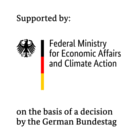IGF 21673 BG

| Period: | 01.04.2021 - 31.12.2023 |
|---|---|
| Partner: | |
| Funder: | AiF |
| Project Manager: | Dr. Sigrid Benfer |
| Team: | Electrolytic Corrosion |
A widely used process for mechanical surface preparation of aluminum components prior to surface protection is grinding, which is used in the automotive industry, rail vehicle construction and facade construction, among others. However, the grinding processes lead to deformation of the areas near the surface of the aluminum materials. These resulting submicrocrystalline deformation zones (Beilby layers) are highly disturbed due to the high energy input during grinding and are thus electrochemically very active, which is accompanied by an increased susceptibility to filiform corrosion in the coated state. In order to reduce the corrosion tendency, the materials or semi-finished products are subjected to chemical pretreatment. This treatment is intended to lead to a removal of the deformation zone, but on the other hand represents an undesirable loss of material, which also has to be disposed of as metal sludge. The thickness of the material that needs to be removed depends on the type and intensity of the pretreatment and is not subject to any uniform definition, but is handled differently by both manufacturers and processors. The same applies to the grinding process in terms of duration and intensity. In corrosion tests, therefore, a wide scattering of test results has repeatedly been observed with apparently identical production, pretreatment, coating and corrosive load.
The aim of the project is to clarify how the commonly applied grinding parameters influence the corrosion properties of coated semi-finished aluminum products. In addition to the heat input during grinding, fundamental investigations are to be carried out on the microstructure of the deformation zone, as well as on the surface activity and corrosion behavior of the materials. Based on these investigations, suitably ground and coated sheets will be subjected to practical corrosion tests. These tests are supplemented by electrochemical and material analytical investigations. From the resulting overall picture of the study, a qualitative model will be created to explain the interaction of grinding/pretreatment/coating/corrosion behavior. From this a set of instructions for action will be created to standardize the grinding conditions and optimize the subsequent steps, leading to an improvement in the corrosion protection properties with a reduced scattering of the results.
back
Das IGF-Vorhaben Nr. IGF 21673 BG der GfKORR - Gesellschaft für Korrosionsschutz e.V. wurde über die AiF im Rahmen des Programms zur Förderung der industriellen Gemeinschaftsforschung (IGF) vom Bundesministerium für Wirtschaft und Klimaschutz aufgrund eines Beschlusses des Deutschen Bundestages gefördert.